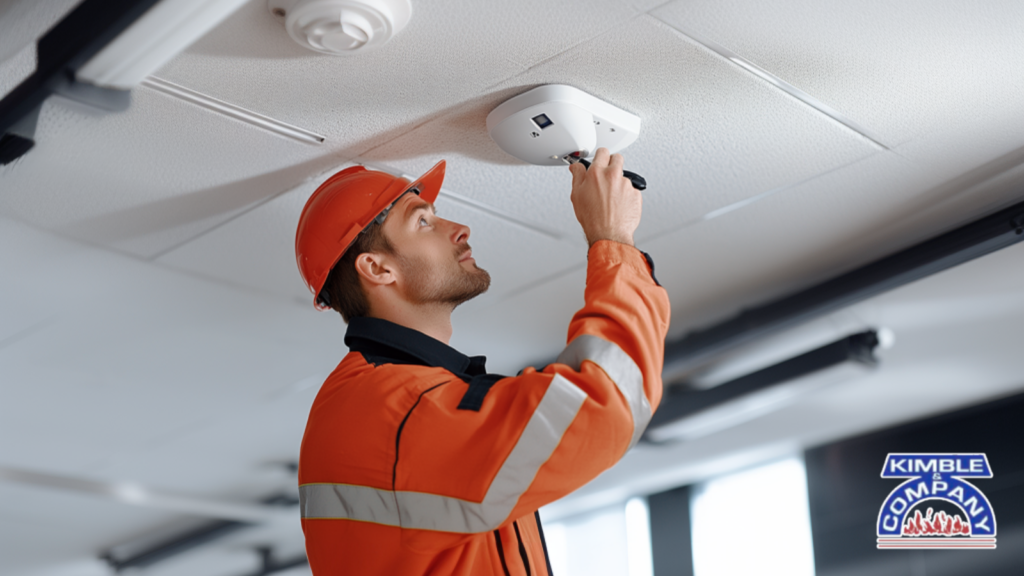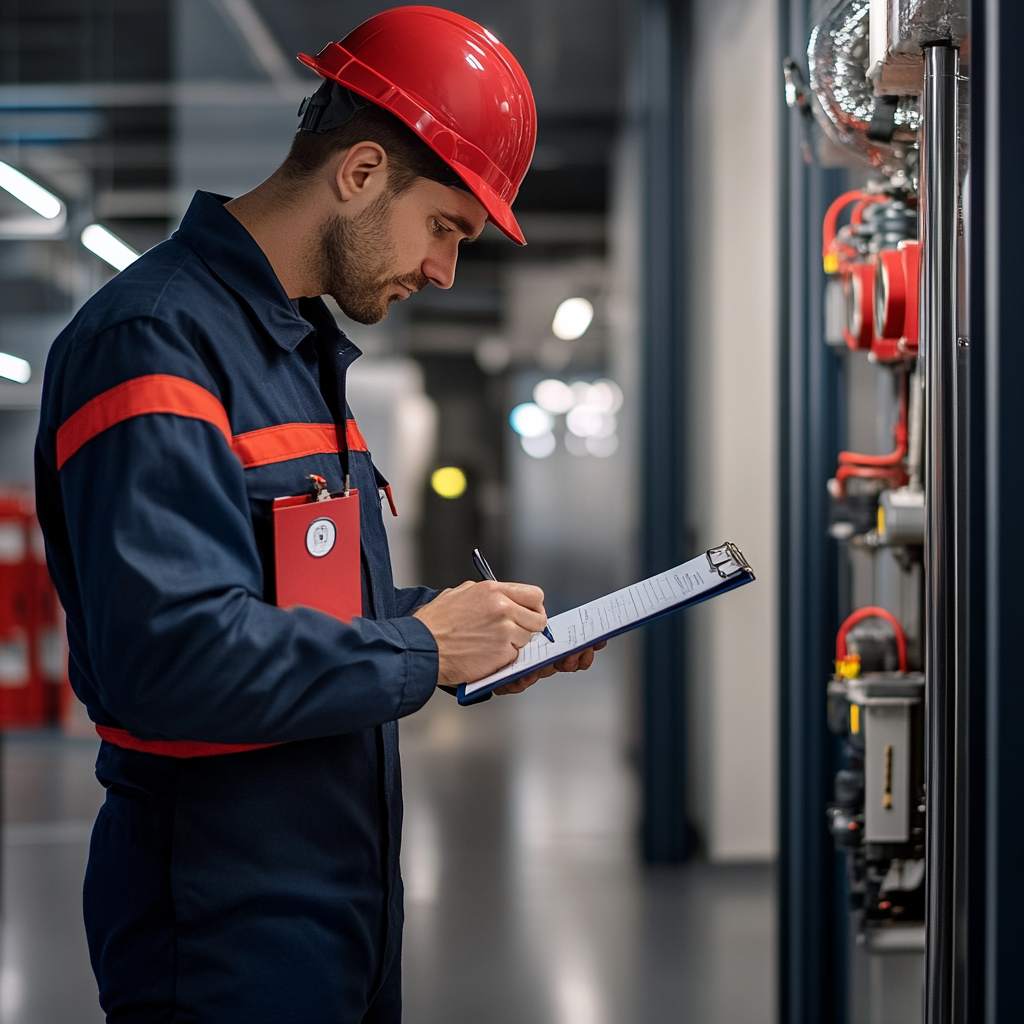Fire and smoke detection systems are vital for a range of properties, from large residential complexes to commercial and industrial facilities. They provide crucial fire protection services by offering early warnings that enable rapid response and prompt evacuation, essential for saving lives and reducing property damage. Operating around the clock, these systems ensure comprehensive protection and strict compliance with safety regulations, continuously safeguarding people and assets.
The Significant Role of Fire and Smoke Detectors
Fire and smoke detectors are essential in maintaining safety, especially in environments at high risk of rapid fire escalation. These systems are designed to detect early signs of fire—through smoke or heat—and immediately trigger alarms to enable swift action. This early detection is key in preventing potential disasters and ensuring the safety of both individuals and property.
- Core Functions Include:
- Swift Evacuation: Early warnings facilitate prompt evacuation, significantly reducing the risk of injury or death.
- Minimizing Damage: Detecting fires early helps prevent them from spreading, crucially limiting property damage, particularly in industrial settings.
- Expansive Area Coverage: Continuous monitoring ensures even minor signs of fire are detected promptly across large and less frequented areas.
- Continuous Monitoring: Fire and smoke detectors provide 24/7 surveillance, crucial in places where fires could occur during non-operational hours.
Compliance with Building Codes and Regulations
Compliance with fire safety regulations is critical for managing properties effectively. Installing compliant fire and smoke detection systems ensures that your property meets all legal standards, protecting against fines, liabilities, and ensuring safety:
- Legal and Insurance Requirements: Local and national fire safety regulations, such as those by the NFPA, require installation and maintenance of these systems. Compliance affects insurance premiums and coverage, and non-compliance can lead to legal actions or higher premiums.
- Occupancy and Operational Compliance: Adherence to fire safety regulations is necessary for obtaining and maintaining occupancy permits and can influence property expansions and renovations.
- Regular Inspections and Liability Protection: Regular inspections and audits ensure ongoing compliance. In the event of a fire, compliance with regulations protects property owners from significant legal liabilities by demonstrating commitment to safety.
Installing a compliant system not only meets legal obligations but also showcases a proactive approach to safeguarding properties and businesses.
Advancements in Early Fire Detection Technology
As technology evolves, fire detection systems have become more sophisticated, offering enhanced features particularly beneficial for large-scale operations. These advancements have made fire detection more accurate, reliable, and capable of detecting various threats beyond just smoke and heat.
How Modern Systems Enhance Early Fire Detection
As technology evolves, fire detection systems have become increasingly sophisticated, greatly enhancing accuracy and reliability. These systems are now capable of detecting a variety of threats including smoke, heat, and carbon monoxide, which is particularly beneficial for large-scale operations like industrial facilities where a delayed response can lead to significant damage or loss.
How Modern Systems Enhance Early Fire Detection
Modern fire detection systems employ advanced multi-sensor technology that combines smoke, heat, and gas detection to identify potential fires at their inception. This early detection is vital in preventing fires from escalating into catastrophic events, especially in environments containing hazardous materials.
- Multi-Sensor Technology: Combines various sensors to provide comprehensive coverage, minimizing false alarms and ensuring prompt detection of real threats.
- Wide-Area Coverage: Designed to monitor large areas, these systems detect early signs of fire across expansive properties, crucial for areas that are less frequently occupied.
Technological Innovations Behind Effective Detection
Technological innovations have significantly improved the effectiveness of fire detection systems in large-scale environments such as commercial properties and industrial complexes.
- Smart Detectors: Network-connected systems allow remote monitoring via mobile apps, providing real-time alerts and ensuring property managers are informed of potential threats, even when off-site.
- Wireless Connectivity: Facilitates easier installation without extensive wiring and integrates smoothly with other security systems for a unified safety approach.
- Self-Diagnostics and Maintenance Alerts: Include features that regularly check system functionality and notify maintenance needs, enhancing reliability during emergencies.
- Integration with IoT: IoT-enabled systems enhance communication with other smart devices like HVAC systems or emergency lighting, improving overall safety measures.
The Necessity of Multiple Detectors Throughout a Building
Multiple detectors are necessary in both residential and large-scale properties to ensure comprehensive safety coverage. Fires can originate in various locations and spread rapidly, so relying on a single detector is often insufficient.
Comprehensive Coverage
Installing detectors throughout the property, especially in areas prone to fire hazards, enhances early detection and effective response. This ensures that all parts of the property are monitored, reducing the risk of undetected fires.
- Room-by-Room Monitoring: Detectors should be placed in every major room, including bedrooms, living areas, kitchens, and hallways, ensuring no part of the property is left unmonitored.
- Strategic Placement: Position detectors near potential fire hazards, such as kitchens or electrical panels, to increase the likelihood of detecting a fire early.
In regions like Los Angeles, compliance with local regulations such as Reg 4 Testing is a critical component of this process. Mandated by the Los Angeles Fire Department (LAFD), Reg 4 Testing requires thorough inspections and certifications to verify that fire protection systems meet the required safety standards.
Maintaining and Upgrading Your Fire Detection System
Routine Maintenance and Testing: To ensure your fire detection system remains in optimal condition, adhere to these essential maintenance tasks:
- Scheduled Testing: Conduct monthly tests of all alarms and sensors, including smoke and heat detectors, to verify functionality.
- Battery Management: Annually replace batteries in standalone detectors and regularly inspect backup batteries in central systems.
- Sensor Maintenance: Regularly clean and recalibrate sensors, particularly in environments with high levels of airborne particles, to maintain accuracy.
- Professional Inspections: Have certified technicians perform annual inspections to identify potential issues and confirm compliance with current safety standards.
- Maintenance Log: Maintain a detailed log of all maintenance activities to support regulatory compliance and performance tracking.
System Upgrades: As technology evolves, upgrading your fire detection system is crucial for optimal protection:
- Aging Systems: Replace systems older than 10 years to enhance reliability and sensitivity.
- Reducing False Alarms: Address frequent false alarms by upgrading to more advanced detection systems.
- Integration: Ensure seamless integration with other security and building management systems for comprehensive safety measures.
- Regulatory Compliance: Stay abreast of evolving fire safety regulations to avoid penalties and maintain compliance.
- Expanding Coverage: Update your system to cover all areas when expanding or renovating your property.
- Smart Features: Consider modern systems that offer smart functionalities like remote monitoring and real-time alerts for improved safety and control.
By implementing regular maintenance and considering timely upgrades, including compliance with local regulations such as Reg 4 Testing, you can ensure that your fire detection system continues to operate effectively, safeguarding both lives and assets.
Fire and smoke detection systems provide critical protection for your property, assets, and people. Early detection and compliance with safety standards reduce risks and ensure a secure environment. Kimble & Company Fire Protection Systems offers tailored, expert solutions for large-scale properties. Reach out to us to discuss your fire safety needs. Contact us today to safeguard your property and investments.


